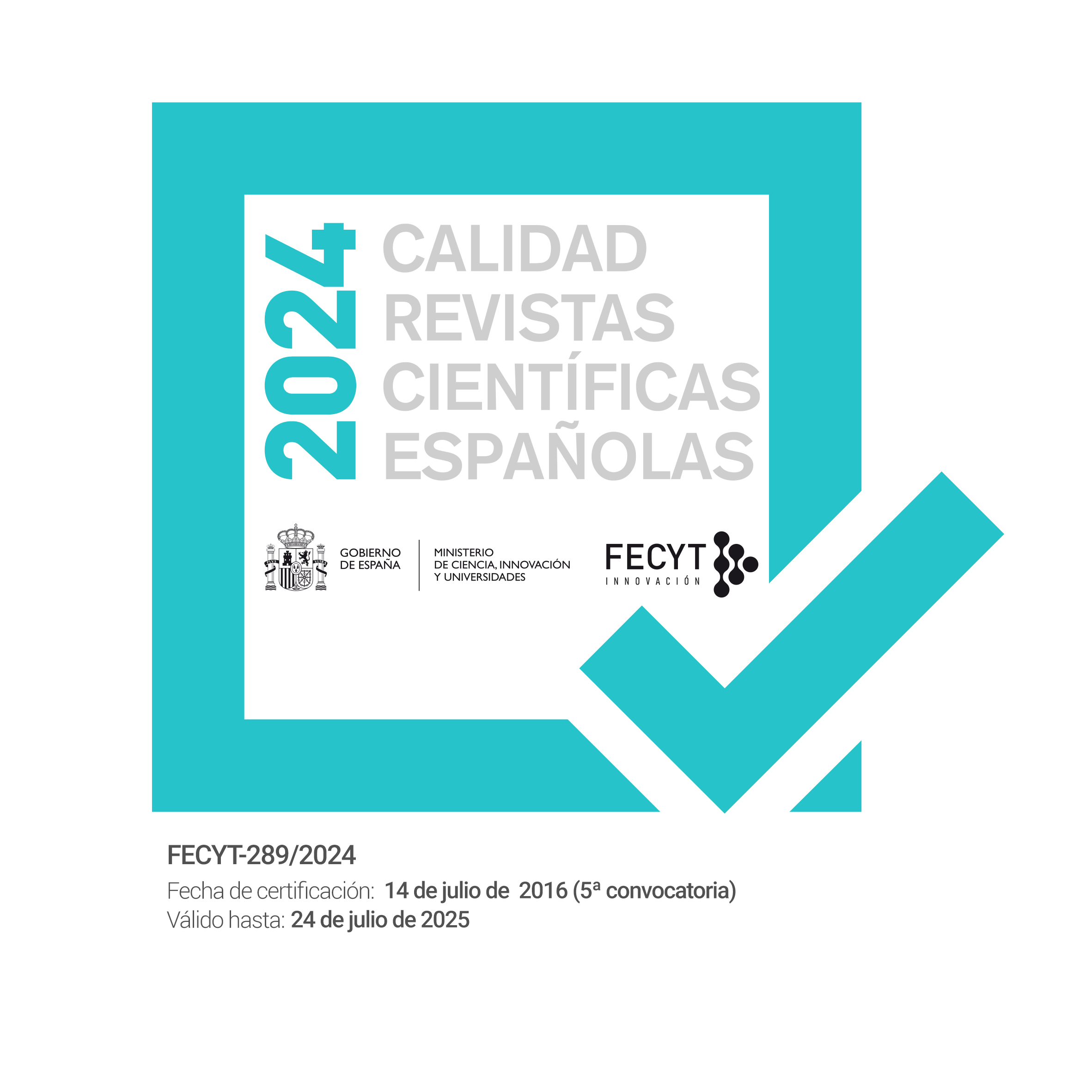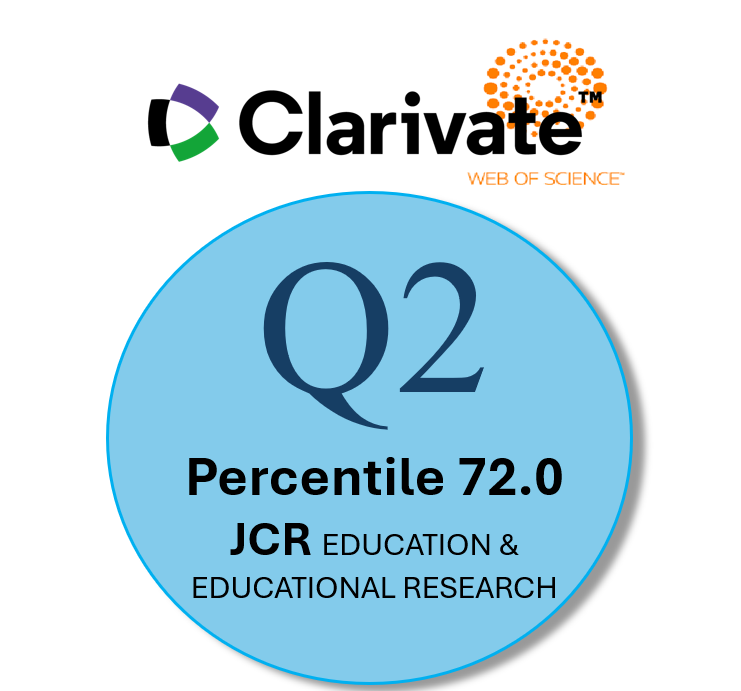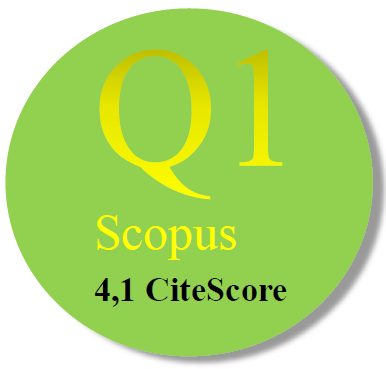Gamifying in times of coronavirus: a case study
a case study
Supporting Agencies
- Esta investigación no ha recibido ninguna subvención específica de los organismos de financiación en los sectores públicos, comerciales o sin fines de lucro.
Abstract
COVID-19 has come with an unexpected educative scenario where distance education became a reality in all educational stages. However, attending to every student should still be a must for all educators. This case study examines the effect of a gamified proposal on third and fourth level primary students. The study uses a mixed methods approach analyzing quantitatively students’ participation data (n=138) and qualitatively the viewpoint of the involved teacher through an interview. The quantitative results show statistically significant differences in the students’ participation during the weeks that gamification was applied. Moreover, the interview displays four categories that conform the teachers’ perspective regarding the intervention: inclusion, participation, motivation and personal challenge. In conclusion, the study discloses that gamification may be a useful method to promote an inclusive education, increase students’ participation as well as their motivation. In addition, it contributes to share relevant information transferable to other contexts in order to improve distance education experiences guaranteeing attention to all students.
Downloads
-
Abstract5599
-
PDF (Español (España))3561
References
Adukaite, A., van Zyl, I., Er, Ş., & Cantoni, L. (2017). Teacher perceptions on the use of digital gamified learning in tourism education: The case of South African secondary schools. Computers & Education, 111, 172-190. https://doi.org/10.1016/j.compedu.2017.04.008
Agarwal, P. K. (2019). Retrieval practice & Bloom’s taxonomy: Do students need fact knowledge before higher order learning?. Journal of Educational Psychology, 111(2), 189-209. http://dx.doi.org/10.1037/edu0000282
Anderson LW, Krathwohl DR, Airasian PW, Cruikshank KA, Mayer RE, Pintrich PR, Raths J, Wittrock MC. (2001). A taxonomy for learning, teaching and assessing: A revision of Bloom’s taxonomy of educational objectives (1ª Ed). New York, NY: Longman.
Anguera, M. T., Blanco-Villaseñor, A., Losada, J. L., Sánchez-Algarra, P., & Onwuegbuzie, A. J. (2018). Revisiting the difference between mixed methods and multimethods: Is it all in the name?. Quality & Quantity, 52(6), 2757-2770. https://doi.org/10.1007/s11135-018-0700-2
Bilgin, C. U., & Gul, A. (2020). Investigating the Effectiveness of Gamification on Group Cohesion, Attitude, and Academic Achievement in Collaborative Learning Environments. TechTrends, 64(1), 124-136. https://doi.org/10.1007/s11528-019-00442-x
Bloom, B. S., Engelhart, M. D., Furst, E. J., Hill, W. H., & Krathwohl, D. R. (1956). Taxonomy of educational objectives: the classification of educational goals. Handbook I: cognitive domain. New York: David McKay Company. Inc.
Çakıroğlu, Ü., Başıbüyük, B., Güler, M., Atabay, M., & Memiş, B. Y. (2017). Gamifying an ICT course: Influences on engagement and academic performance. Computers in human behavior, 69, 98-107. https://doi.org/10.1016/j.chb.2016.12.018
Chen, W. L., Elchert, D., & Asikin-Garmager, A. (2018). Comparing the effects of teacher collaboration on student performance in Taiwan, Hong Kong and Singapore. Compare: A Journal of Comparative and International Education, 50(4), 515-532. https://doi.org/10.1080/03057925.2018.1528863
Chen, J., Moran, S., & Gardner, H. (Ed.). (2009). Multiple intelligences around the world. San Francisco, CA: Jossey-Bass.
Chomsky, N. (2009). A conversation about multiple intelligences/an interview with Noam Chomsky. En C. Branton Shearer (Ed.), MI at 25: Assessing the impact and future of multiple intelligences for teaching and learning (pp. 44–50). New York, NY: Teachers College Press.
Contreras-Espinosa, R. (2016). Juegos digitales y gamificación aplicados en el ámbito de la educación. RIED. Revista Iberoamericana de Educación a Distancia, 19 (2), 27-33.
Creswell, J. W. (2012). Qualitative inquiry and research design: Choosing among five approaches. London: Sage publications.
Creswell, J. W., Plano Clark, V. L., Gutmann, M. L., & Hanson, W. E. (2003). Advanced mixed methods research designs. In A. Tashakkori & C. Teddlie (Eds.), Handbook of mixed methods in social and behavioral research (pp. 209-240). Thousand Oaks, CA: Sage.
Creswell, J. W., Hanson, W. E., Clark Plano, V. L., & Morales, A. (2007). Qualitative research designs: Selection and implementation. The counseling psychologist, 35(2), 236-264.
Eslava-Suanes, M. D, de León Huertas, C., & Gonzáles- López, I. (2017). La formación en competencias transversales para trabajar en entornos educativos inclusivos. Revista de Educación Inclusiva, 8(2), 58-76
Fernández-Río, J., de las Heras, E., González, T., Trillo, V., & Palomares, J. (2020). Gamification and physical education. Viability and preliminary views from students and teachers. Physical Education and Sport Pedagogy, xx(xx), 1-16. https://doi.org/10.1080/17408989.2020.1743253
Fogarty, R. J., & Pete, B. M. (2011). Supporting differentiated instruction: A professional learning communities approach. Bloomington: Solution Tree Press.
Gardner, H. (1983). Frames of mind: The theory of multiple intelligences. New York: Basic Books.
Gatti, L., Ulrich, M., & Seele, P. (2019). Education for sustainable development through business simulation games: An exploratory study of sustainability gamification and its effects on students' learning outcomes. Journal of cleaner production, 207, 667-678. https://doi.org/10.1016/j.jclepro.2018.09.130
Gewerc, A. & Zapata, M. (2019). Presentación del número especial de RED sobre competencia digital e inclusión social en niños y niñas de educación primaria. Revista de Educación a Distancia, 19(61), 1-6. http://dx.doi.org/10.6018/red/61/00
Goh, D. H. L., Pe-Than, E. P. P., & Lee, C. S. (2017). Perceptions of virtual reward systems in crowdsourcing games. Computers in Human Behavior, 70, 365-374. https://doi.org/10.1016/j.chb.2017.01.006
Hernández-Horta, I. A., Monroy-Reza, A., & Jiménez-García, M. (2018). Aprendizaje mediante Juegos basados en Principios de Gamificación en Instituciones de Educación Superior. Formación universitaria, 11(5), 31-40. http://dx.doi.org/10.4067/S0718-50062018000500031
Hernando, A. (2015). Viaje a la Escuela del Siglo XXI: Así trabajan los colegios más innovadores. Madrid: Fundación Telefónica.
Huang, B., & Hew, K. F. (2018). Implementing a theory-driven gamification model in higher education flipped courses: Effects on out-of-class activity completion and quality of artifacts. Computers & Education, 125, 254-272. https://doi.org/10.1016/j.compedu.2018.06.018
Huber, S. G., & Helm, C. (2020). COVID-19 and schooling: evaluation, assessment and accountability in times of crises—reacting quickly to explore key issues for policy, practice and research with the school barometer. Educational Assessment, Evaluation and Accountability, 32, 237-270. https://doi.org/10.1007/s11092-020-09322-y
Johnson, B., & Christensen, L. (2012). Educational Research. Quantitative, Qualitative and Mixed Approaches. Thousand Oaks, CA: Sage.
Knutas, A., Ikonen, J., Nikula, U., & Porras, J. (2014). Increasing collaborative communications in a programming course with gamification. In B. Rachev & A. Smrikarov (Eds.), Proceedings of the 15th international conference on computer systems and technologies - CompSysTech ‘14 (pp. 370–377). New York: ACM Press. https://doi.org/10.1145/2659532.2659620.
Lämsä, J., Hämäläinen, R., Aro, M., Koskimaa, R., & Äyrämö, S. M. (2018). Games for enhancing basic reading and maths skills: A systematic review of educational game design in supporting learning by people with learning disabilities. British Journal of Educational Technology, 49(4), 596-607. doi:10.1111/bjet.12639
Levine, M. (2012). A mind at a time: How every child can succeed. New York: Simon and Schuster.
Li, C., Dong, Z., Untch, R. H., & Chasteen, M. (2013). Engaging computer science students through gamification in an online social network based collaborative learning environment. International Journal of Information and Education Technology, 3(1), 72–77. https://doi.org/10.7763/ijiet.2013.v3.237.
López-Rodríguez, I., Avello-Martínez, R., Baute-Álvarez, L. M., & Vidal-Ledo, M. (2018). Juegos digitales en la educación superior. Educación Médica Superior, 32(1), 0-0.
Lowenhaupt, R., & Hopkins, M. (2020). Considerations for school leaders serving US immigrant communities in the global pandemic. Journal of Professional Capital and Community, xx(xx), xx-xx. https://doi.org/10.1108/JPCC-05-2020-0023
Meşe, C., & Dursun, Ö. Ö. (2018). Influence of Gamification Elements on Emotion, Interest and Online Participation. Egitim ve Bilim, 43(196). DOI: 10.15390/EB.2018.7726
Nicholson, S. (2015). A RECIPE for meaningful gamification. En T. Reiners & L. C. Wood (Eds.), Gamification in education and business (pp. 1–20). Cham: Springer International Publishing. https://doi.org/10.1007/978-3-319-10208-5_1.
Orozco, I., & Moriña, A. (2020). Estrategias Metodológicas que Promueven la Inclusión en Educación Infantil, Primaria y Secundaria. Revista Internacional de Educación para la Justicia Social, 9(1), 81-98. https://doi.org/10.15366/riejs2020.9.1.004
Parsons, S. A., Vaughn, M., Scales, R. Q., Gallagher, M. A., Parsons, A. W., Davis, S. G., . . . Allen, M. (2018). Teachers’ instructional adaptations: A research synthesis. Review of Educational Research, 88(2), 205–242. doi:10.3102/003465431774319
Putz, L. M., Hofbauer, F., & Treiblmaier, H. (2020). Can gamification help to improve education? Findings from a longitudinal study. Computers in Human Behavior, 110, 106392. https://doi.org/10.1016/j.chb.2020.106392
Rodríguez, C., Ramos, M., Santos, J. M., & Fernández, J. M. (2019). El uso de la gamificación para el fomento de la educación inclusiva. IJNE International Journal of New Education, 2(3), 39-59. http://dx.doi.org/10.24310/IJNE2.1.2019.6557
Rule, A. C., & Lord, L. H. (2003). Activities for differentiated instruction addressing all levels of bloom's taxonomy and eight multiple intelligences. Open Educational Resources. 295. https://scholarworks.uni.edu/oermaterials/295
Saggah, A., Campion, R., & Stanier, C. (2018). An investigation of the role of the teacher in gamified learning in Primary Schools. Edulearn18 Proceedings, 7700-7708.
Sedov, S. A. (2019). Modern lessons’ construction based on the taxonomy of pedagogical objectives and the multiple intelligences theory. International Journal of Educational Management, 33(2), 252-264. https://doi.org/10.1108/IJEM-01-2018-0029
Sideeg, A. (2016). Bloom’s taxonomy, backward design, and Vygotsky’s zone of proximal development in crafting learning outcomes. International Journal of Linguistics, 8(2), 158-186. http://dx.doi.org/10.5296/ijl.v8i2.9252
Siemon, D., & Eckardt, L. (2017). Gamification of teaching in higher education. En S. Stieglitz, C. Lattemann, S. Robra-Bissantz, R. Zarnekow, T. Brockmann (eds) Gamification (pp. 153-164). Cham: Springer. https://doi.org/10.1007/978-3-319-45557-0_11
Suprayogi, M. N., Valcke, M., & Godwin, R. (2017). Teachers and their implementation of differentiated instruction in the classroom. Teaching and Teacher Education, 67, 291-301. https://doi.org/10.1016/j.tate.2017.06.020
Tashakkori, A., & Teddlie, C. (1998). Mixed methodology: Combining qualitative and quantitative approaches applied Social Research Methods (Vol. 46). Thousand Oaks, CA: Sage.
Treiblmaier, H., Putz, L. M., & Lowry, P. B. (2018). Setting a Definition, Context, and Theory-Based Research Agenda for the Gamification of Non-Gaming Applications. Association for Information Systems Transactions on Human-Computer Interaction (THCI), 10(3), 129-163. DOI: 10.17705/1thci.0010
Tsay, C. H. H., Kofinas, A., & Luo, J. (2018). Enhancing student learning experience with technology-mediated gamification: An empirical study. Computers & Education, 121, 1-17. https://doi.org/10.1016/j.compedu.2018.01.009
van Geel, M., Keuning, T., Frèrejean, J., Dolmans, D., van Merriënboer, J., & Visscher, A. J. (2019). Capturing the complexity of differentiated instruction. School effectiveness and school improvement, 30(1), 51-67. https://doi.org/10.1080/09243453.2018.1539013
Yin, R. K. (2003). Case study research: Design and methods (Vol. 5). Thousand Oaks, CA: Sage.
- 08-01-2021 (3)
- 31-12-2020 (2)
- 19-09-2020 (1)
Copyright (c) 2020 Distance Education Journal

This work is licensed under a Creative Commons Attribution-NonCommercial 4.0 International License.
Las obras que se publican en esta revista están sujetas a los siguientes términos:
1. El Servicio de Publicaciones de la Universidad de Murcia (la editorial) conserva los derechos patrimoniales (copyright) de las obras publicadas, y favorece y permite la reutilización de las mismas bajo la licencia de uso indicada en el punto 2.
2. Las obras se publican en la edición electrónica de la revista bajo una licencia Creative Commons Reconocimiento-NoComercial-SinObraDerivada 3.0 España (texto legal). Se pueden copiar, usar, difundir, transmitir y exponer públicamente, siempre que: i) se cite la autoría y la fuente original de su publicación (revista, editorial y URL de la obra); ii) no se usen para fines comerciales; iii) se mencione la existencia y especificaciones de esta licencia de uso.
3. Condiciones de auto-archivo. Se permite y se anima a los autores a difundir electrónicamente las versiones pre-print (versión antes de ser evaluada) y/o post-print (versión evaluada y aceptada para su publicación) de sus obras antes de su publicación, ya que favorece su circulación y difusión más temprana y con ello un posible aumento en su citación y alcance entre la comunidad académica. Color RoMEO: verde.













